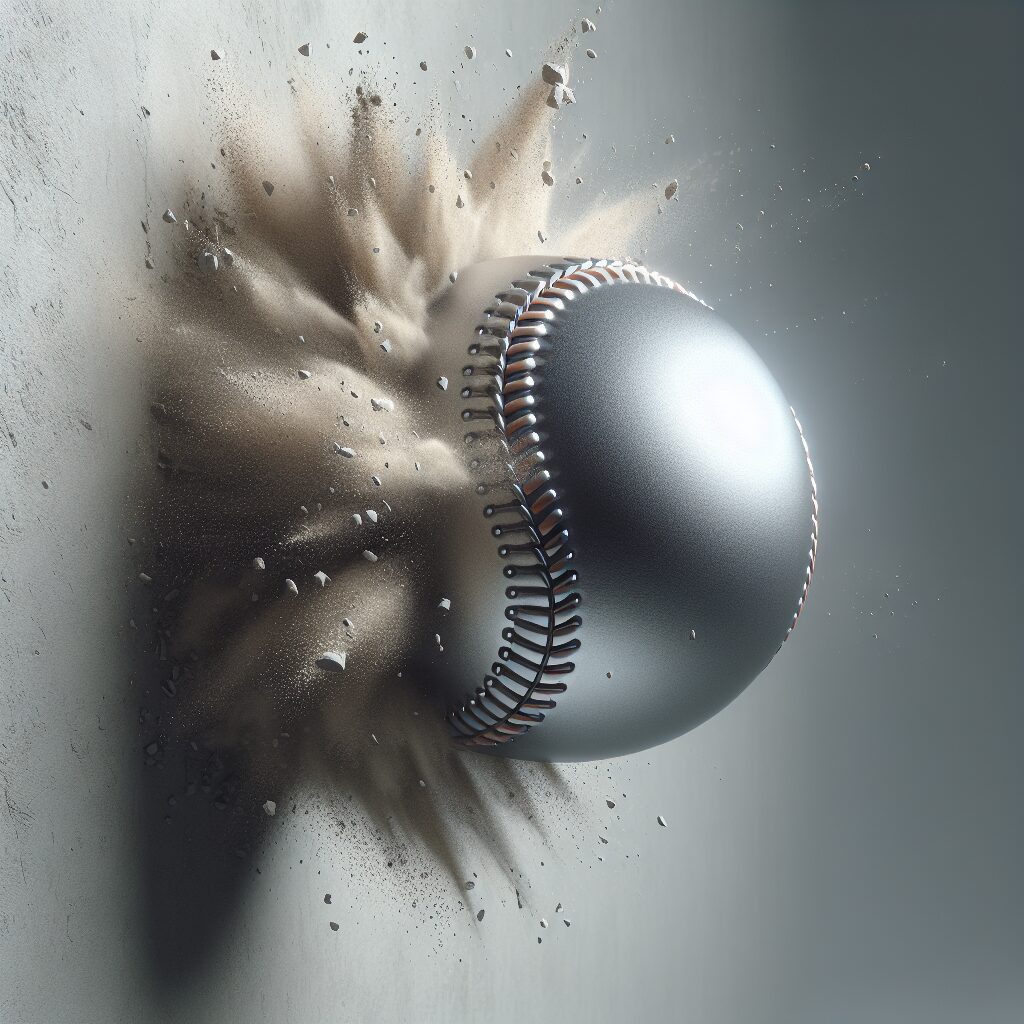Ball durability is a crucial factor in sports, especially in fast-paced games where balls are subjected to high impacts and intense use. It refers to the ability of a ball to withstand repeated hits, bounces, and collisions without compromising its shape or structure. One unique aspect of impact resistance is its direct correlation to the lifespan and overall performance of a ball. A ball with high impact resistance is more likely to endure rigorous play and maintain its integrity over a longer period. In this article, we will delve into the importance of impact resistance in ball durability, exploring specific impacts that balls endure and the unique features that contribute to their resilience. We will also discuss key takeaways for selecting a durable ball that can withstand various play conditions and provide an optimal experience for athletes.
Frequent impacts can significantly affect the longevity and playability of a ball. Whether it’s the repeated contact with a hard surface or the forceful kicks on a soccer field, each impact contributes to the wear and tear of the ball. Manufacturers take this into consideration when designing balls for specific sports, incorporating features to enhance their impact resistance. Anti-abrasion materials, reinforced stitching, and advanced internal structures are just a few examples of the methods used to ensure a ball can withstand the demands of the game. Understanding the unique impacts a ball must endure and the features that contribute to its impact resistance is imperative for athletes and sports enthusiasts alike. In the upcoming sections, we will explore the key takeaways, including tips for selecting a durable ball, understanding the impact resistance rating system, and proper maintenance practices to extend the lifespan of your sports equipment.
Key Takeaways
1. Ball durability depends on its impact resistance, which refers to its ability to withstand repeated collisions with other objects without experiencing significant damage or deformation.
2. Manufacturers use various materials and manufacturing techniques to enhance a ball’s impact resistance. Examples include adding layers of material, incorporating reinforcing fibers, or using special molding processes.
3. The measurement of a ball’s impact resistance is typically done through drop tests, where the ball is dropped from a certain height onto a hard surface multiple times to evaluate its performance.
4. Impact resistance is critical for sports balls, as it affects their longevity, performance, and safety. A ball with low impact resistance may crack, lose shape, or become less predictable in its trajectory, leading to potential injuries or unfair gameplay.
5. Understanding the factors affecting impact resistance can help manufacturers optimize ball design, leading to more durable and reliable products. Furthermore, ongoing research and innovation in this area can contribute to safer and longer-lasting sports equipment in the future.
What Makes Impact Resistance the Key to Ball Durability?
The Importance of Impact Resistance in Ball Durability
When it comes to sports equipment, especially balls used in various sports, durability is of utmost importance. A ball that can withstand the impact of intense gameplay without losing its shape or breaking apart is essential for both professional athletes and amateurs alike. That’s where impact resistance comes into play. Impact resistance is the ability of a ball to withstand forceful impacts without sustaining damage. In this article, we will explore why impact resistance is crucial for ball durability and how it can be achieved.
The Factors Affecting Impact Resistance
Several factors contribute to the impact resistance of a ball. The materials used in its construction play a significant role. For example, balls made from high-quality synthetic materials like polyurethane or vulcanized rubber tend to exhibit better impact resistance compared to those made with cheaper materials. Additionally, the design and structure of the ball, including its internal bladder and outer layer, can impact its resistance to impacts. Manufacturers employ various techniques like reinforced stitching, multiple layers, and innovative design features to increase impact resistance.
The Benefits of High Impact Resistance
A ball with high impact resistance offers several benefits. Firstly, it ensures a longer lifespan for the ball, reducing the frequency of replacement. This is particularly important for sports organizations and individuals who often have to invest in a significant number of balls. Moreover, a durable ball maintains its shape and performance characteristics even after repeated impacts, resulting in a more consistent playing experience for athletes. It also minimizes the risk of injury as a result of ball breakage during intense gameplay, making it crucial for player safety.
How to Enhance Impact Resistance
Manufacturers employ various methods to enhance the impact resistance of balls. One technique is the use of advanced materials with superior shock-absorbing properties, allowing the ball to absorb and dissipate impact energy effectively. Additionally, reinforcing the internal bladder with layers of synthetic materials or using specialized foam padding helps improve impact resistance. Moreover, employing proper manufacturing techniques, such as consistent bonding and lamination of ball layers, ensures better impact resistance. Attention to detail in design and construction can make a significant difference in the durability and impact resistance of a ball.
Conclusion
When it comes to sports balls, impact resistance is the key to durability. By understanding and prioritizing impact resistance in the materials, design, and construction of balls, manufacturers can provide athletes with long-lasting, high-performance equipment. Now that you know the importance of impact resistance, make sure to choose balls that exhibit superior durability to elevate your game.
5 Tips for Maximizing Ball Durability through Impact Resistance
- Opt for balls made from high-quality materials known for their impact resistance, such as polyurethane or vulcanized rubber.
- Look for balls with reinforced stitching and multiple layers to ensure enhanced impact resistance.
- Consider balls with advanced shock-absorbing properties to effectively absorb and dissipate impact energy.
- Ensure proper manufacturing techniques are employed, such as consistent bonding and lamination of ball layers, for better impact resistance.
- Regularly inspect and maintain your balls to identify any signs of wear and tear that may affect their impact resistance. Replace damaged balls promptly to prevent injuries.
FAQ
1. What is impact resistance?
Impact resistance refers to the ability of a ball to withstand force or shock without breaking or losing its structural integrity.
2. Why is impact resistance important for ball durability?
Impact resistance is crucial for ball durability because balls are often subjected to high-intensity impacts during sports or recreational activities. Without adequate impact resistance, balls are prone to cracking, splitting, or becoming unusable.
3. How is impact resistance measured for balls?
Impact resistance of balls is usually measured through standardized tests that involve dropping the ball from a certain height onto a hard surface and assessing any damage or deformation.
4. Are all balls equally resistant to impacts?
No, different balls are designed to have varying levels of impact resistance based on their intended use and the materials used in their construction. For instance, soccer balls typically have higher impact resistance than tennis balls.
5. Can the impact resistance of a ball be improved?
Yes, ball manufacturers continuously strive to enhance impact resistance by using innovative materials, advanced designs, and reinforced construction techniques.
6. Does impact resistance affect the performance of a ball?
In most cases, higher impact resistance does not significantly affect the performance of a ball during regular play. However, extremely rigid balls may have reduced bounce or feel, impacting certain sports’ dynamics.
7. How can I ensure the durability of my balls?
To ensure ball durability, it is essential to store and handle them properly, avoid exposing them to excessive heat or moisture, and follow the manufacturer’s recommendations for maintenance and usage.
8. Are balls with high impact resistance more expensive?
Generally, balls with higher impact resistance tend to be more expensive due to the use of premium materials and advanced manufacturing techniques. However, pricing can also vary based on brand, sport, and additional features.
9. Are there any safety implications of using balls with low impact resistance?
Using balls with low impact resistance can be unsafe as they are prone to shattering or breaking during play, potentially causing injuries to players or bystanders.
10. Can impact resistance be improved through maintenance?
Maintenance can help preserve the existing impact resistance of a ball, but it cannot significantly improve it. Regular cleaning, proper inflation, and avoiding excessive wear and tear can help extend the lifespan of a ball.
Final Thoughts on Impact Resistance: The Key to Ball Durability
In summary, impact resistance plays a vital role in determining the durability of balls. Whether it’s for sports, recreational activities, or professional use, having balls that can withstand high-intensity impacts is crucial to ensure longevity and maintain the integrity of the game.
Manufacturers are continuously working on improving the impact resistance of balls by utilizing advanced materials, engineering techniques, and ergonomic designs. This ongoing innovation contributes to enhancing the overall experience and safety of players and enthusiasts alike.




